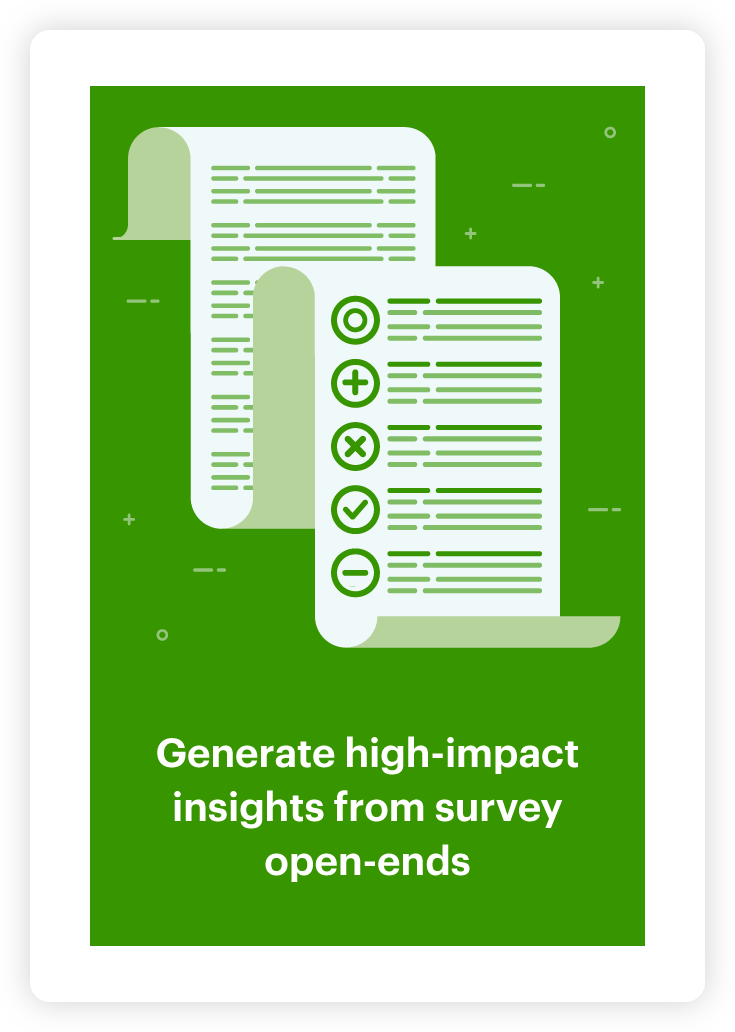Why a restaurant customer experience program is a vital investment

The restaurant industry: low margins, high competition, huge opportunity.
The National Restaurant Association predicts that US restaurants will make over $1tn in sales in 2024. Yet, the same report states that 45% of operators expect competition to be more intense than last year.
With these fine margins, restaurants need to be alive to customers’ thoughts and feelings. Keeping diners coming back for more is the difference between getting a big slice of the $4tn pie, rather than having to fight for scraps.
The foolproof way of doing this is collecting, analyzing and acting on customer feedback in a repeatable, rigorous restaurant guest experience program. Here’s why.
Building loyalty
Repeat customers are responsible for the majority of restaurants’ revenue: accounting for 60%-70% on average.
The precarious nature of the industry means that it only takes a small number of these customers eating elsewhere to turn a profitable location into a loss maker.
Intense competition means that diners are spoiled for choice. Customers don’t have to put up with a bad experience; it’s easy for them to find somewhere else to eat, rather than persevere with a poor service.
Your loyal customers also offer greater value: they spend up to 67% more than new customers. By ensuring diners keep coming back for more, you’re generating more revenue compared to constantly attracting new, one-time customers.
Developing a restaurant customer experience program that puts guest feedback at its heart is critical to creating success. It only takes one bad experience to lose a loyal customer.
An efficient program will identify and remedy any issues arising in diners’ feedback, including correcting issues raised by dissatisfied customers. This is the difference between a successful and failing operation.
Driving new customers with LTOs
Loyal customers are your bread and butter; but developing loyalty means attracting diners in the first place.
This is where limited time offers (LTOs) come into their own. 81% of guests are more likely to visit a restaurant during an LTO, providing a great opportunity to captivate diners.
But LTOs are a double-edged sword. They’re often customers’ first impression of your brand. A great experience sets them up as repeat diners, but a bad experience means they’ll never visit you again.
Having a robust customer experience program analyzing open-ended feedback achieves two things.
First, you can identify what customers like and dislike about LTOs. Analyzing this feedback allows you to pinpoint what works and what needs improving, then make changes accordingly.
Relative Insight works with a national pizza restaurant chain to do exactly this. It saw a 13% increase in LTO revenue and 34% rise in returning customers due to actions taken off the back of its analysis through our tool.
Second, you’ll have better oversight of dining experience in general. Operating a successful guest experience program minimizes problems, ensuring people trying your brand have a positive experience encouring them to come back for more, rather than a disappointment that puts them off visiting.
Creating a coherent experience across locations
Whether a customer is eating in Ohio, Oregon or Orlando, they should know exactly what they’re going to get when they visit your chain.
How do you know their interactions with your brand are consistent across locations? Without a restaurant customer experience program that analyzes guests’ open-ended responses, you don’t.
Being able to identify operational or marketing issues at store or franchise level strengthens your brand overall, while also giving you the power to turn around underperforming outlets.
Relative Insight works with many national restaurant chains to identify areas of improvement for underperforming locations.
A casual dining chain used our tool to justify investment in its struggling outlet in Lincoln, Nebraska — helping the store turn raise its CSAT score and increase its number of diners.
Track the impact of regional headwinds
Segmenting customer feedback across different regions also enables you to track the impact of state-specific legislation.
For example, you’re likely to be using fewer staff in locations like California with high minimum wage requirements. What impact does this have on dining experience when compared to stores operating with higher staff numbers?
Do these locations have lower overall satisfaction scores? Is this down to a lack of staff undermining service levels, order speed and food quality? Or could it be another factor?
Without a rigorous customer feedback analysis program, you’re relying on anecdotes to understand the why behind store performance and the impact of local legislation.
Anecdotes don’t persuade decision makers to invest. You need clear evidence that, for example, customers in California are dissatisfied with slow service, it’s leading to a fall in overall satisfaction (OSAT) scores – and therefore revenue – with hiring more staff the only remedy.
Improve satisfaction and boost revenue with a great restaurant guest experience program
These are just four of many reasons why it’s vital to collect, analyze and act on restaurant customer feedback.
Whether you measure guest experience using OSAT, CSAT, NPS or other metrics, a simple score doesn’t tell you why diners feel the way they do. You need to incorporate open-ended feedback into your analysis in a way that enables you to take immediate action.
That’s what I mean by a rigorous guest experience program. Something that incorporates both quantitative and qualitative data, comes to clear, evidenced conclusions and drives rapid action.
If your program doesn’t include all three of those things, please speak to me using the button below — I will show you how Relative Insight can enhance your existing restaurant customer experience program.
